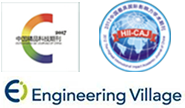Abstract:
There is an urgent need to explore new treatment technologies and biomass materials to mitigate the growing ecological problems of global warming, sea level rise and climate degradation caused by excessive carbon dioxide emissions. This paper reviews the research progress of biomass chitosan in CO
2 separation, capture and resource utilization; details the mechanism of CO
2 separation by chitosan membranes and methods to improve membrane separation performance; summarizes the methods to enhance the CO
2 capture performance of chitosan-based activated carbon; and summarizes the research on the conversion of CO
2 into value-added products such as carbonate, methane and olefin by chitosan-based catalysts. Finally, the future development trend of biomass chitosan in the process of helping to achieve the "double carbon" strategic goal is presented.


 下载:
下载: